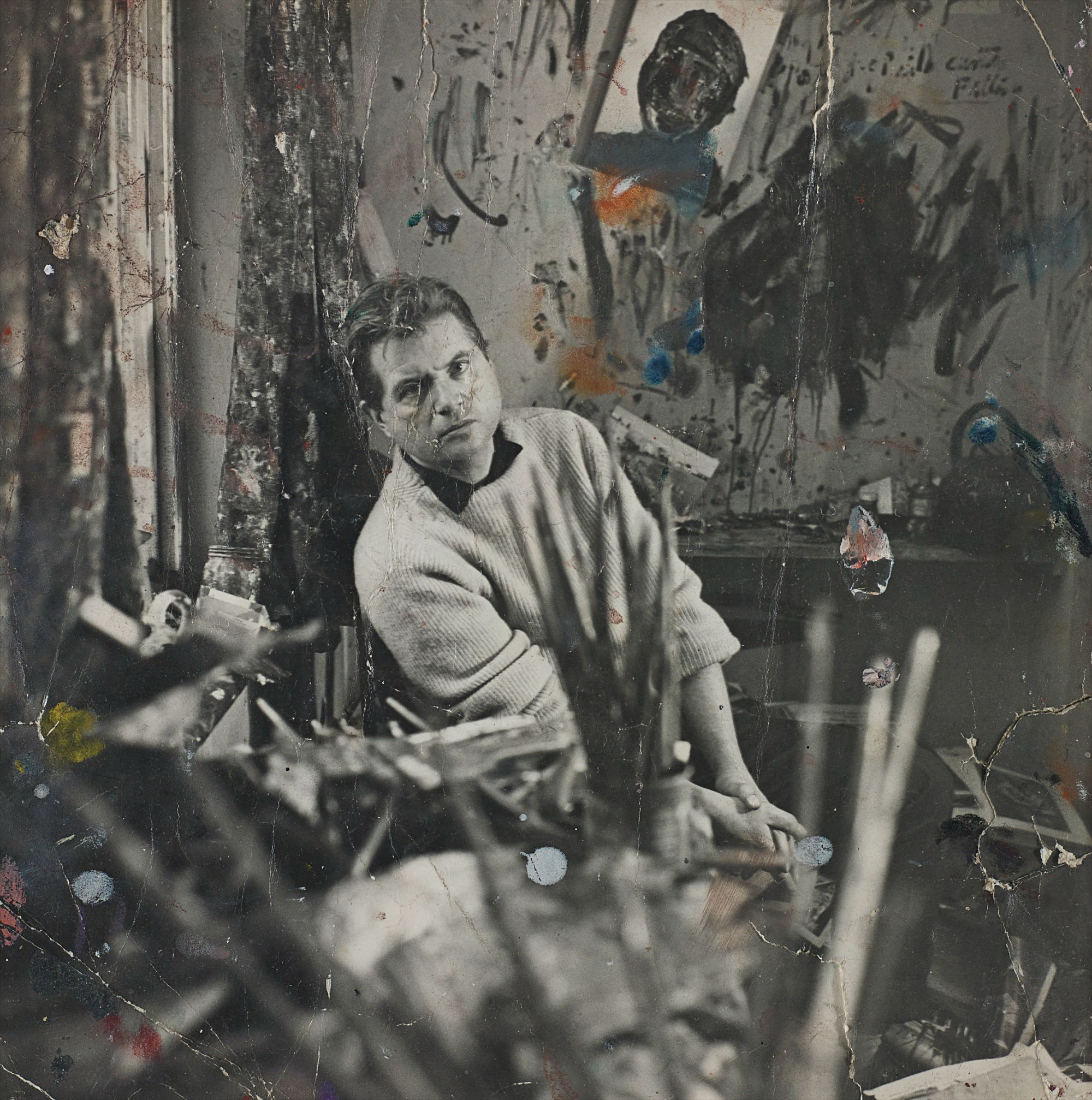

101
Cecil Beaton
Francis Bacon in his studio
Full-Cataloguing
Francis Bacon
In 1997 Bacon’s Reece Mews studio, left untouched since his death five years earlier, was catalogued, taken apart and reassembled in Hugh Lane Gallery in Dublin. 7,500 objects were listed, including 1,500 photographs, providing scholars with an unparalleled opportunity to examine how Bacon used this astonishing range of printed materials in his work. Bacon worked from photographs, as well as reproductions, magazines and other found images, because for him ‘photographs are not only points of reference; they’re often triggers of ideas’. These tools allowed him to distort and manipulate the subject in ways he found constraining when working from sitters. His paintings did not mimic what he saw in the photographs but instead appropriated them, allowing him to improvise on the subject’s physicality, physiognomy and psychology.
Bacon knew many photographers, and often invited them to take photos for him, and occasionally of him, including Henri Cartier-Bresson, John Deakin and Cecil Beaton. First introduced by Graham Sutherland, Beaton and Bacon recognised in each other a kindred spirit. The two liked to drink together, and were often to be found in the French House in Soho. Bacon was by now established in his career, exhibiting internationally and starting his long association with Marlborough Gallery. Beaton, known for his shoots for Vogue and Vanity Fair as well as portraits of the Royal Family and other celebrities, described Bacon in his journals as ‘most interesting, refreshing and utterly beguiling’. He asked Bacon to paint his portrait, which Bacon did (the work has not survived), and this photograph offers an intriguing example of a painter photographed by his own sitter. Their nexus was inevitable, as was their creative collaboration.
The current lot, from a series shot in Bacon’s Battersea studio in January 1960, captures the artist at the age of 50. In this particular image the painter sits in front of a canvas, looking to his right at the camera from behind a sea of brushes and other clutter, while behind him on the wall are smears of paint. In his journals Beaton described the studio as “a Dostoevsky shambles of discarded paints, rags, newspapers and every sort of rubbish”, and the photograph confirms this impression. This lot is unique not just as an image, but also as an artifact. It is one of the few photographs known to us by Beaton that Bacon kept in his studio (another is in the public collection in Dublin), with paint, charcoal and other markings covering its surface. As such, it is both a visual depiction and a physical manifestation of Bacon’s working practices, and an extraordinary relic that once littered the artist’s densely creative landscape.
Cecil Beaton
British | B. 1904 D. 1980Cecil Beaton was a highly celebrated British photographer who is perhaps best known for taking portraits of the colorful celebrities who composed the fashionable society of early-mid twentieth century London, all of whom were within his social circle. According to an autobiographical account, Cecil Beaton's relationship with photography began as a boy when he fell in love with picture postcards of the Edwardian theater actress Miss Lily Elsie. He took up photography at a young age, using his sisters Nancy and Baba as his primary subjects. Initially, Beaton sought to emulate pictures he saw in fashion magazines, especially the soft-focus technique used by Baron Adolphe de Meyer.
In 1929 he moved to New York after signing a contract with American Vogue. Throughout the 1930s Beaton traveled extensively as a portrait photographer, spending time in Hollywood amongst the glitter and glamour of Hollywood film stars. When the Second World War began and focus turned towards its dangers and devastations, Queen Elizabeth II commissioned Beaton to document the ravages of the German blitz. Following the War, in addition to taking photographs, in the late 1950s into the 1960s Beaton was involved in film as a stage and costume designer. During this time, he designed the costume and set for the stage version of My Fair Lady (New York, 1956; London, 1958) and the film Gigi (1958).